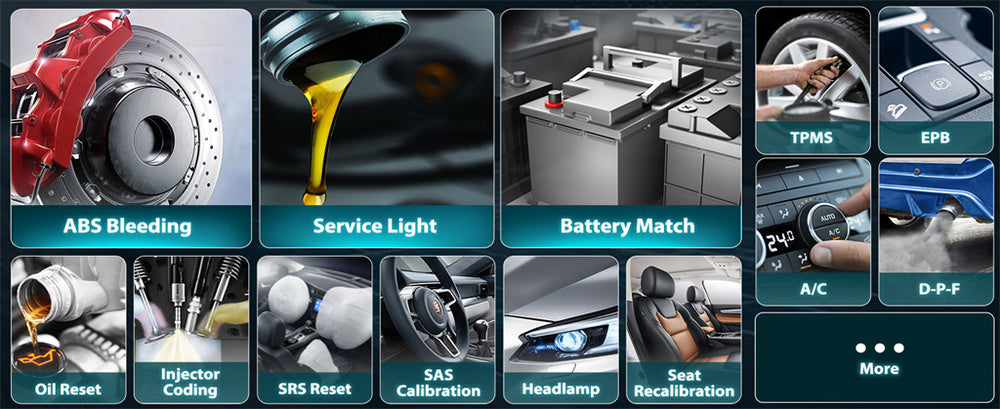The Exhaust Gas Recirculation (EGR) system is a vital component in modern engines, primarily designed to reduce harmful emissions.
It operates by redirecting a portion of the engine's exhaust gases back into the intake manifold.
This recycled exhaust lowers the combustion chamber temperature, which in turn minimizes the formation of nitrogen oxides (NOx) — pollutants responsible for smog and acid rain.
Beyond reducing pollutants, the EGR system also improves engine efficiency. By lowering combustion temperatures, it reduces stress on components, especially under high-temperature operation.
Consequently, the EGR system not only helps with environmental compliance but can also enhance fuel economy by promoting more complete combustion.
Common Symptoms of a Clogged EGR Valve

When the EGR valve becomes clogged or malfunctions, several symptoms may arise, negatively impacting the vehicle's performance.
One of the first signs is rough idling or stalling, which occurs when exhaust gases fail to re-enter the engine. This disrupts the air-fuel mixture, leading to irregular engine operation, particularly at lower speeds.
Another symptom of EGR valve issues is poor acceleration. When exhaust gases can't be recirculated into the combustion chamber, the engine may struggle to perform optimally, resulting in sluggish acceleration, especially when the vehicle is starting from a stop.
In some cases, clogged EGR valves can lead to higher emissions. As the valve fails to regulate combustion temperatures properly, the engine may produce excess pollutants, which could cause the vehicle to fail emission tests.
The check engine light is a common warning sign of a malfunctioning EGR valve, triggered when the engine control module (ECM) detects a fault in the system.
Additionally, drivers may notice increased fuel consumption. A clogged EGR valve forces the engine to work harder, leading to inefficient combustion and higher fuel costs.
How to Diagnose EGR Clogging
Diagnosing a clogged EGR valve can be tricky, as many of its symptoms overlap with other engine problems. Start by inspecting the EGR valve for signs of carbon buildup or dirt.
Although external inspection can provide clues, deeper blockages, especially within the valve or cooler, may not be visible.
A more reliable method is to use an OBD-II scanner, such as the Foxwell NT716, which can identify error codes related to the EGR system.
Common trouble codes like P0400 or P0401 point to issues with the EGR system, such as clogging or malfunctions. The NT716 offers an intuitive interface, making it easy to read codes and perform diagnostics, helping you take action before the problem escalates.
For a thorough diagnosis, a smoke test can also be useful. A technician introduces smoke into the intake system, checking for leaks around the EGR valve or related components. This test can reveal vacuum leaks or faulty parts that contribute to improper EGR function.
Lastly, a performance test, such as a test drive, can help confirm whether the symptoms — like poor acceleration or rough idling — are caused by the EGR system.
Solutions for Fixing a Clogged EGR Valve
Once you determine that the EGR valve is clogged, the next step is to address the issue. In many cases, cleaning the valve can resolve the problem, especially if carbon buildup is the culprit.
To clean the valve, remove it from the engine, then use an appropriate cleaner, like carburetor cleaner or EGR cleaner, to remove the deposits. If the carbon buildup is severe, soaking the valve or using specialized cleaning tools may be necessary.
However, cleaning might not always restore full functionality. If the valve is damaged or if cleaning doesn't work, replacing it could be the only solution.
The replacement process is generally straightforward, though the complexity can vary depending on the vehicle’s model. In cases where the EGR system includes a cooler, it’s important to inspect and clean it as well, as carbon can accumulate there too.
Sometimes, the issue may not lie with the valve itself but with associated components, such as the vacuum lines or EGR sensors. If these parts are damaged or worn, replacing them might resolve the problem without the need for a full valve replacement.

How to Prevent EGR Clogging
Preventing EGR valve clogging largely depends on proper maintenance and driving habits. One of the most effective ways to reduce carbon buildup is to drive at highway speeds regularly.
Short city trips, particularly those involving frequent stops, prevent the engine from reaching the temperatures necessary to burn off carbon deposits. Longer highway drives help the engine stay hotter, reducing the chance of buildup.
Using high-quality fuel can also help. Premium fuels with detergent additives can minimize carbon deposits in the engine, including in the EGR system. For those who drive short distances frequently, choosing a cleaner fuel can help maintain the system.
Routine maintenance, such as changing the oil, air filters, and fuel filters, is also crucial. Keeping the engine clean and properly maintained can prevent excessive carbon buildup, thus prolonging the life of the EGR system.
For additional protection, some vehicle owners use EGR cleaning additives. These products, added to the fuel system, can help reduce carbon accumulation and keep the EGR valve and other engine components cleaner over time.
Conclusion
The EGR system plays a critical role in reducing harmful emissions and enhancing engine performance. When the EGR valve becomes clogged, it can lead to issues like rough idling, sluggish acceleration, and increased fuel consumption.
Regular cleaning, timely repairs, and adopting good driving habits can prevent clogging and keep the EGR system functioning efficiently.
Utilizing tools like the Foxwell NT716 OBD-II scanner can help identify problems early, saving both time and money. By staying proactive with maintenance and diagnostics, vehicle owners can ensure optimal performance, reduce emissions, and extend the lifespan of their engine.
FAQs
What is an EGR reset?
An EGR reset involves clearing any error codes related to the EGR system in the vehicle’s computer, usually done with an OBD2 scanner. This can help the engine control module (ECM) recalibrate and monitor the EGR system afresh.
How do I get my EGR system monitor ready?
To get the EGR monitor ready, drive the vehicle at various speeds, including highway speeds, to allow the engine control module to perform self-tests. Make sure the vehicle is fully warmed up, and avoid turning off the engine until the drive cycle is complete.
How do you clear an EGR valve?
To clear an EGR valve, remove it from the engine and clean it with a carburetor cleaner or specialized EGR cleaner to remove carbon buildup. Reinstall it once it’s free of debris to restore optimal function.




Leave a comment
This site is protected by hCaptcha and the hCaptcha Privacy Policy and Terms of Service apply.